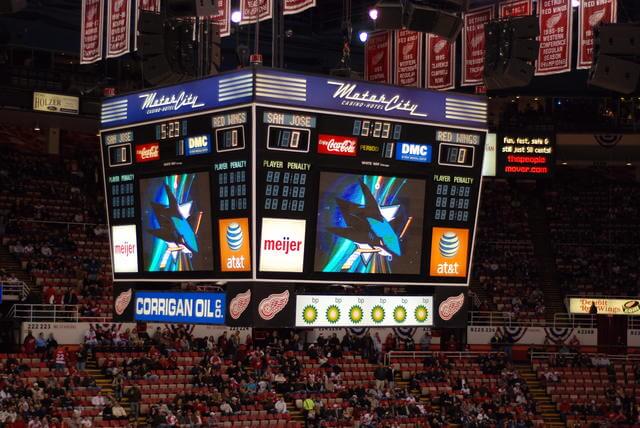(This article is a parody….obviously)
When you’re just dying to lose a client for good, and being direct with them just won’t cut it. Here are nine steps ANY working video professional can take to make clients run away from them in all directions and warn any other possible clients of your work. All you have to do is follow these 9 simple steps and you’ll never have another client to worry about. Granted, if you do only 1 or 2 of these the relationship could be salvaged, so make sure you do everything on this list and before long, you’ll never have to worry about clients again.
1. Underestimate the amount of work and the cost of the project
Losing a client for good starts as soon as you meet them for the very first time. Asking a client questions about their project is a fool’s errand. Ask them to explain it once, then commit to a price for the project right then and there without any followup questions. Not only will this make the client think you are not taking their job seriously, it will also make them wonder why they need a professional to ‘think through’ all the little details of the project.
2. Overpromise so you can close the deal
Before the deal is actually closed, you need to sweeten the pot so the client buys into you. The client is actively listening for your opinions on their project, so this is a great time to make promises you can’t keep. They want to make a corporate video that looks like a movie? Tell them you’ll shoot and deliver it in digital 3D. They want you to shoot their blue and green company mascot on a green/blue screen? No problem, we’ll just rotoscope the whole thing. They want a $6,000 TV commercial with a Brad Pitt look-alike? Tell them you’ll get them the real Brad Pitt, Angelina Jolie and all their kids too. The method here is to straight up wow the client by lying your face off. This will lull the client into a false sense of security and set them up for the largest possible disappointment farther down the road.
3. Be completely inflexible on the schedule and timeline, and nickel & dime your client
Now that you have closed the deal it’s time to settle on price, schedule, and timeline. This is your first chance to really collaborate with the client. These are your first baby steps on the road to completing this project with your client. The best thing you can do here is refuse to collaborate at all; refuse to listen to your client’s needs, and be as unrelenting as possible in squeezing every last dime out of your client. Do they want a delivery date that’s sooner than you? That’ll cost ‘em….Do they need to shoot on weekends? That’s double the price!…..Do they need to sit in on an extra edit session? CHA-CHING! Clients hate when the price of a project changes. They expect you, as a professional, to be able to accurately estimate the cost of a project and to stick to it. Obviously if the scope of the project changes significantly this will impact the price, clients get this….so make sure that you’re increasing the price for even the smallest most insignificant change of scope. This will send them running for the hills.
4. Make changes to the shoot location, time, date or equipment at the very last minute
You’ve made it through pre-production and the big shoot day is almost here, in fact it’s tomorrow. This is an ideal time to start making changes to the schedule. Call the client up at 10pm and tell them you need to change the shoot location to a different house, across town. Also tell them that you had to downgrade the camera you promised to shoot with because of reasons. (be as vague as possible) Then make sure the shoot at the client’s customer’s home that was supposed to last 2 hours takes 10 hours. Even better if someone on your crew breaks something valuable or irreplaceable. The idea here is that a properly planned and executed shoot will run smoothly, and this is what the client expects. It’s your job to see those expectations go unmet if you want to ensure you never see this client again.
5. Argue with your crew or cast in front of the client while on-set or, failing that, just act completely unprofessional on-set
This step will really allow your creativity to fly. The method here is to act completely unprofessional in front of your client. Yell at your camera operator for no apparent reason. Ask you DP to shoot a “True Medium Wide Extreme Closeup” then act like he’s a joke when he doesn’t know what you are talking about. If things are running a little behind schedule, take a loud personal call in the middle of the set. You see, the client will be expecting that you and your crew are a well-oiled machine who can anticipate each other’s needs and foresee problems before they occur. The client will expect you to be polite to each other. The client will expect to have fun shooting video, make sure this doesn’t happen. Even if you have to yell at everyone for no reason, or constantly act annoyed by the crew, you must make the shoot feel like a chore to everyone involved. Otherwise that client might have fun with you on set, and they might want to work with you again…and that just can’t happen.
6. Ask the client for more money to complete the project
So you’ve made it through the shoot and the client is still with you. My condolences. But all is not lost! If you have completed all the other steps outlined above, the client is really scratching their head and wondering why they picked you. Now is your chance to ask for more money. Make up excuses, hide behind technical jargon, or straight up lie. The point is; after production you have all the power and you hold the footage; this is a point at which the client is flying high after the shoot and feeling good about the project. You COULD express your excitement at beginning the post-process, you could collaborate with the client on ways to approach the edit, or you could try to lose the client by asking for more money. And if you are reading this list, I think I know what you’ll chose.
7. Deliver a very early edit to a client who has never seen a rough-cut before
Let’s say your client has never worked on a video project before. All of this is very new and exciting for them, and if they haven’t left you already, they are likely going to stick with you until this project is complete. They are excited and eager to see the finished project. Nows the time to send them a very early rough-cut of their project. Make sure you don’t explain what a rough-cut is when you send it, and it’ll go even better if you use words like “final” or “master” when you send the rough-cut to the client. Once you have sent the rough-cut, and the client has responded to it you need to make sure to talk down to them for thinking this rough-cut was the completed project. This will definitely make the client less-comfortable giving you feedback and will completely railroad the post-production collaboration process.
8. When you deliver the final project, make sure you under deliver and provide many excuses as to why
Clients expect that you will do what you agreed to do up front and they absolutely LOVE it when you deliver sooner, better, and cheaper than they expected. So to really trash the relationship, make sure you send the final video with large pieces absent. Missing graphics, missing lines from the script, typos, etc. Any and everything you can do to under deliver your project to your client will be noticed not only by your client, but by everyone they show the project to. And top this off by taking no personal accountability for the shortcommings of the project. Blame your crew, blame your editor, blame the weather, blame the internet. The point here is that clients are expecting the best from you, they are expecting you to care. If you don’t want to see them again, then make sure it’s clear that you aren’t the best, and that you don’t care at all.
9. Use the video for self-promotion without express written, or at least verbal consent, from the client
So you’ve delivered the project to the client. They probably hate it but you don’t really care because you got paid. Now is your time to blast the video out on every channel you have access to. Share it everywhere and take all the credit for it. Don’t worry about the fact that it could be something the client intends to distribute internally. Don’t bother caring if the client intends to sell the video. Post it to your Vimeo page and make it embeddable and downloadable to anyone who wants it. After all, it’s your video right?
You’ve just completed performing every task on this list for your client and they are long gone. Congratulations! You just sent another client to ECG productions.
At ECG Productions we hear a lot of horror stories from our clients about some of the other video ‘professionals’ they have worked with. It’s downright criminal the way some people treat their clients in this industry and it is a point of pride among the crew here at ECG that we treat every client, regardless of budget, with respect.









